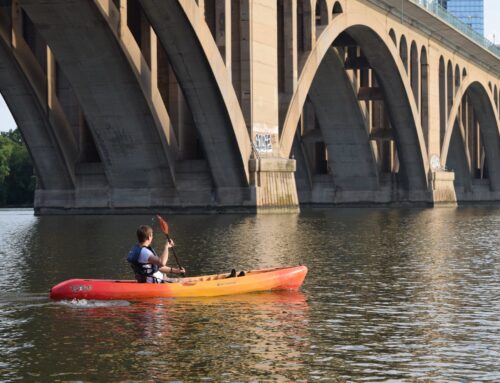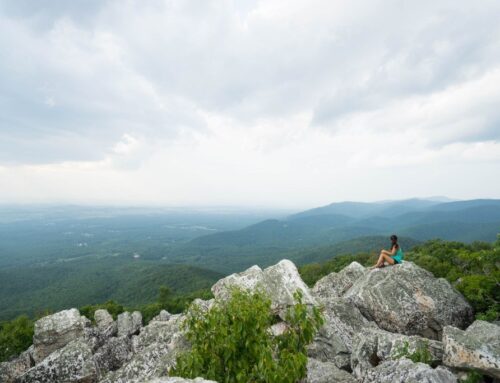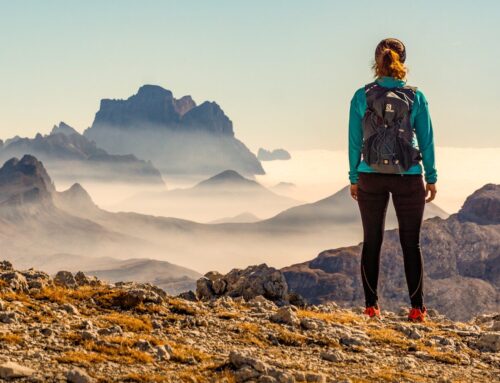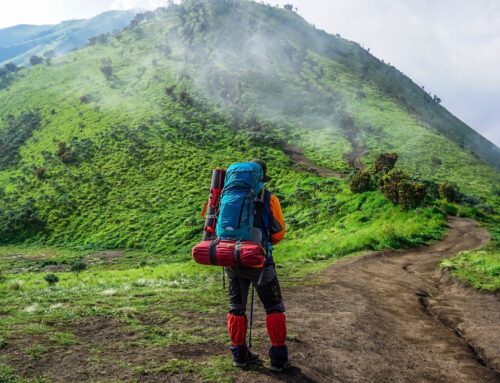Updated November 1, 2020
With tons of beautiful hiking trails, Acadia National Park is a pretty ideal spot for a weekend getaway or an outdoor vacation. While many of the hikes in the park (like Beehive and Precipice) are difficult, challenging adventures, there are some super scenic hikes that are accessible to anyone who wants to get out and explore the area’s scenic forests and coastlines. The Ship Harbor trail was one of my absolute favorite hikes in Acadia; it’s short, sweet, and incredibly scenic. While the hike is very self-explanatory, I created this guide to help you make the most of your experience on the Ship Harbor Trail in Acadia National Park.

Things to Know Before Hiking the Ship Harbor Trail
Here’s a quick snapshot of the Ship Harbor trail:
- Trail Distance: 1.3 miles
- Elevation Gain: Minimal
- Difficulty: Easy
- Where to Park: There is a designated parking lot at the trailhead for Ship Harbor, with additional parking along the street.
This trail is clear and self-explanatory, but there are a few things you should know before embarking on the Ship Harbor Trail:
- The Ship Harbor trail is located in the Bass Harbor area of Acadia, NOT the main Park Loop Road area. This area is about a 30 minute drive from the main stretches of Sand Beach and Otter Cliffs, and is much less crowded than the popular Ocean Path (another easy hike in Acadia).
- There are two forks in the trail that each create a loop. You can’t get lost on these trails because they both loop back around to the same fork, so don’t worry about which way to go at these junctions.
- The best time of day to hike this trail is at sunset. While you can do this trail at any time of day, the sun sets over the trees and reflects off the water, which is absolutely stunning on clear days.

Hiking the Ship Harbor Trail: Our Review
After I parked along the road near the trail head, I found my way to the entrance of the trail. There were several cars in the parking lot, but the trail wasn’t very crowded, and my dogs and I had many parts of the trail completely to ourselves. Throughout the hike, the trail was completely flat, and at first, it begins in a scenic forested area with lots of shade and tiny glimpses of the water through the trees. Every so often, there were placards with information about the ecosystems, history, and geology of the area.

We went around sunset, and the sun was beginning to get low in the sky. Eventually, I came across a fork in the trail. Knowing it was a loop, I decided to turn right here and begin my hike toward the waterfront.

A few more minutes through the woods brought me to a second fork in the trail, and I remained to the right hand side, which brought me to a very scenic rock beach with a wonderful sunset view. The shoreline here was absolutely beautiful – to the right, there was an inlet with smooth waters, and to the left, there were waves crashing against the rocks near the ocean. All of it was surrounded by trees.

Continuing down the path, we passed by even more beautiful coastline areas. The sun cast a gorgeous orange glow on the rocks, which made the hike even more magical. In some of the rocky shoreline areas, you can find tide pools with local marine life hiding inside during low tide.

The rest of the trail winding back to the parking lot consisted of small boardwalks and dirt pathways surrounded by lovely trees and bushes that were changing colors in the cool fall air. As the sun set, the colors seemed to glow even warmer against the orange sky. There wasn’t anything crazy or challenging about the hike, but the beauty of the scenery and the relatively small crowds in the area made it one of my absolute favorite trails in the park (and I hiked A LOT).


Additional Resources for Hiking in Acadia
What to Bring
- Breathable hiking clothes – For warmer hikes, you’ll want to wear a sweat-wicking shirt and breathable pants, like these Patagonia hiking shorts for men and women. For cold-weather hikes, we recommend dressing in layers, including merino wool baselayers for men and women, a down puffer jacket for men and women, and a Northface waterproof outer shell for men and women (a must for hiking in Seattle). And don’t forget a pair of the best women’s and men’s hiking socks!
- Trekking poles – You won’t need these for every single hike, but we suggest throwing them in your car just in case. We recommend the Black Diamond Trail Ergo cork trekking poles, which are lightweight, easy to transport, and durable.
- Water bottle – Having water available at all times is a huge must. To limit disposable plastic, we recommend bringing your own refillable water bottle. We’re obsessed with Hydro Flask water bottles because they keep water cold for hours.
- Sunscreen and bug spray – Sweatproof sunscreen and DEET bug spray can help you avoid sunburn and bug bites, two of hiking’s most annoying after-effects. Our favorite kind of sunscreen is Sun Bum, as it is free of harsh chemicals and safe for marine life, including coral reefs.
- A brimmed hat or cap – The sun can be brutal in open hikes, so always pack a brimmed hat or cap for day hikes in the sunshine.
- Emergency blanket and first aid kit – We’d strongly recommend bringing a first aid kit and a lightweight emergency blanket on every hike. Why? Because the unfathomable can happen, and it’s always best to play it safe.
- Durable day pack – A durable day pack is the perfect spot to stash all your hiking gear. While any backpack will do, we recommend the Osprey Tempest 20 or the Talon 22 day packs because they’re comfortable and breathable for long hikes. For more information, check out our best day packs for any terrain guide.
Wondering what exactly you should pack for your next hike? Visit our Complete Day Hiking Packing List for our full list and our top gear recommendations.






